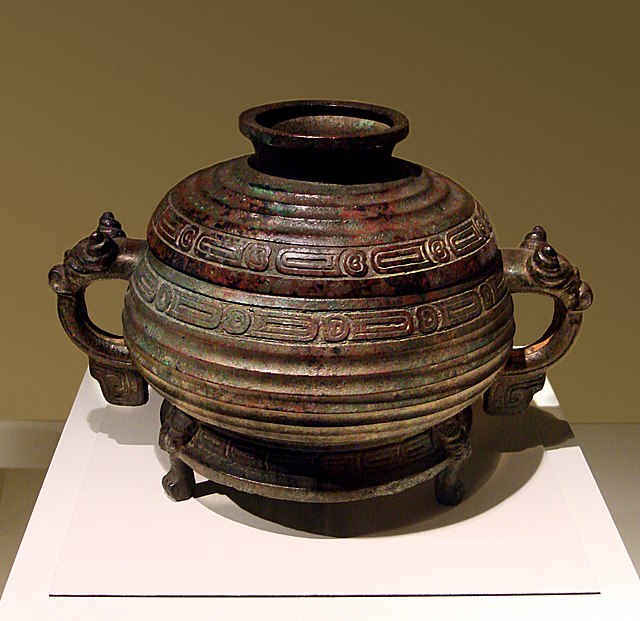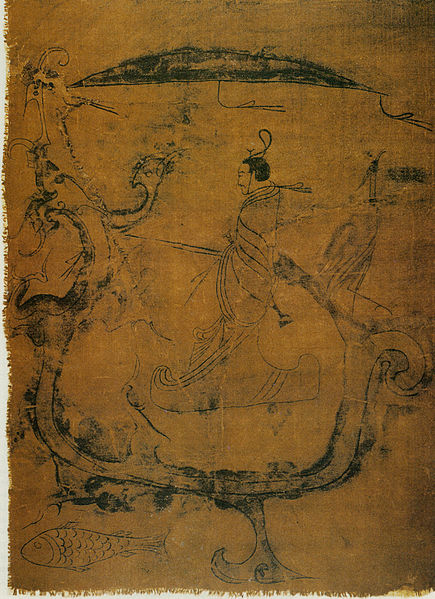Spade money was an early form of coin and commodity money used during the Zhou dynasty of China. Spade money was shaped like a spade or weeding tool, but the thin blade and small sizes of spade money indicate that it had no utilitarian function. The earlier versions of spade coins tended to have a fragile, hollow socket, reminiscent of a metal shovel. Later versions of spade money had this socket transformed into a thin, flat piece, and over time, inscriptions were added to the spade coins to mark their denominations. Several versions of spade money circulated across the Chinese Central Plains during the Zhou dynasty period until they were abolished by the Qin dynasty in 221 BC in favour of the Ban Liang cash coins.
Square Shoulder Spade coin from the State of Zhou. c. 650-400 BC. One character bei (Chinese: 貝).
Square Foot Spade of An Yang
The Zhou dynasty was a royal dynasty of China that existed for 789 years from c. 1046 BC until 256 BC, the longest such reign in Chinese history. During the Western Zhou period, the royal house, surnamed Ji, had military control over ancient China. Even as Zhou suzerainty became increasingly ceremonial over the following Eastern Zhou period (771–256 BC), the political system created by the Zhou royal house survived in some form for several additional centuries. A date of 1046 BC for the Zhou's establishment is supported by the Xia–Shang–Zhou Chronology Project and David Pankenier, but David Nivison and Edward L. Shaughnessy date the establishment to 1045 BC.
States of the Western Zhou dynasty
Western Zhou bronze pot (896 BC), Fufeng County, Shaanxi – Baoji Zhouyuan Museum
A Western Zhou ceremonial bronze of cooking-vessel form inscribed to record that the King of Zhou gave a fiefdom to Shi You, ordering that he inherit the title as well as the land and people living there
Silk painting depicting a man riding a dragon, painting on silk, dated to 5th–3rd century BC, from Zidanku Tomb no. 1 in Changsha, Hunan






